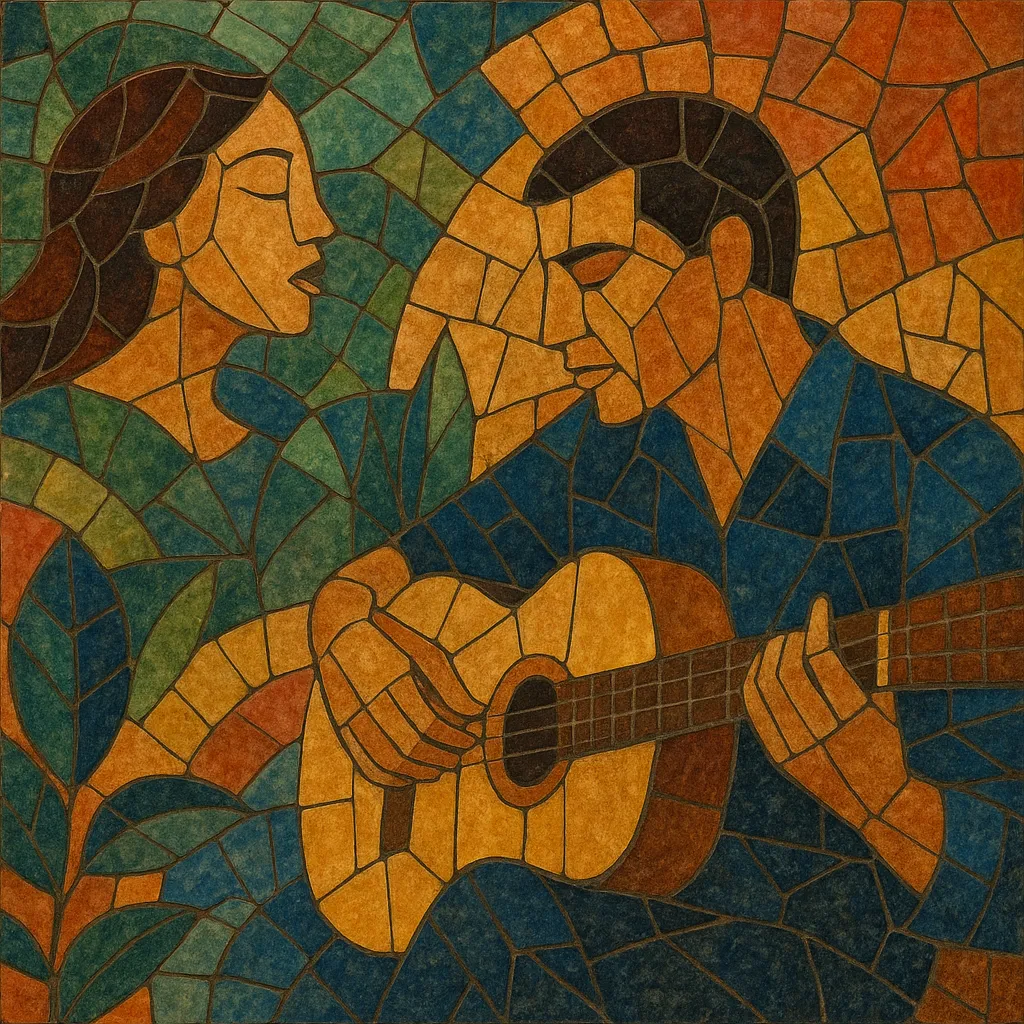MPB (Música Popular Brasileira) is a broad Brazilian popular music movement that crystallized in the mid-1960s after bossa nova. It blends samba and other regional rhythms with jazz harmony, singer‑songwriter craft, and elements of contemporary pop and rock.
The style is marked by sophisticated melodies, extended harmonies, inventive arrangements, and lyrically rich songs that often use poetry and metaphor. Many classic MPB works balance intimacy (voice and violão/nylon‑string guitar) with lush studio orchestration, drawing from samba‑canção, choro, baião, and frevo while engaging modern influences.
Historically, MPB provided a platform for social commentary during Brazil’s military dictatorship, with artists employing allegory to navigate censorship. It remains a living tradition that continually renews itself through new generations (“nova MPB”).
Emerging in the wake of bossa nova, MPB coalesced around university circuits, TV song festivals, and record labels that promoted sophisticated songwriting rooted in Brazilian rhythms. The term “MPB” was adopted by media and audiences to describe a cosmopolitan, artist‑driven approach that fused samba, choro, baião, and frevo with jazz harmony and contemporary pop/rock sensibilities.
Television song festivals in the mid-to-late 1960s spotlighted new voices and helped define MPB aesthetics. Under the military dictatorship (1964–1985), many artists addressed social and political issues, often using metaphor and allegory to navigate censorship while maintaining lyrical depth and musical innovation.
Tropicália (Tropicalismo) briefly erupted within the MPB sphere, absorbing psychedelia and rock and challenging cultural orthodoxies. Though short-lived as a movement, its experimental spirit broadened MPB’s palette and reinforced the genre’s openness to global sounds.
MPB matured into an album‑oriented art form with ambitious arrangements, studio craft, and iconic voices. Artists combined intimate guitar‑based songwriting with orchestral writing, funk/soul grooves, and regional rhythms, shaping a canon that defined Brazilian popular music on the world stage.
From the 1990s onward, new waves blended MPB’s songwriting ethos with indie, electronics, hip hop, and neo‑soul, often labeled “nova MPB.” The core principles—lyrical sophistication, Brazilian rhythmic identity, and harmonic richness—continue to guide contemporary artists while keeping the genre dynamic and relevant.
Start with voice and violão (nylon‑string acoustic guitar) as the song’s backbone. Add bass (often melodic), drum kit with samba‑informed grooves, pandeiro and other Brazilian percussion, and tasteful keys (piano/Rhodes). Strings and horns can be used for lush orchestration; electric guitar and subtle electronics are common in modern takes.
Use Brazilian rhythmic cells as foundations: samba (syncopated 2/4 feel), bossa‑derived patterns, baião (driving northeast groove), and occasional frevo accents. Drums and percussion should interlock with guitar syncopations; light swing and subtle offbeats are crucial. Keep grooves propulsive yet refined rather than aggressive.
Employ extended jazz chords (maj7, 9ths, 11ths, 13ths), secondary dominants, modal mixture, and tritone substitutions. Voice‑leading and chromatic bass motion enrich progressions. Melodies should be singable but nuanced, often exploring the upper extensions of chords and using rhythmic phrasing that plays against the groove.
Write poetically with vivid imagery. MPB favors lyrical depth—romance, memory, identity, and social reflection—often delivered through metaphor and double meanings. Balance intimacy with universality so the song resonates beyond its immediate context.
Orchestrations should support the song, not overwhelm it. Consider call‑and‑response between voice and instruments, dynamic swells with strings, and countermelodies in woodwinds or guitar. Modern productions may integrate subtle electronics while preserving acoustic warmth and clarity of vocals.
Common forms include verse‑refrain or AABA, with occasional bridges and instrumental interludes. Tempos range from tender ballads to mid‑tempo, danceable sambas; the feel should remain elegant and groove‑conscious.


